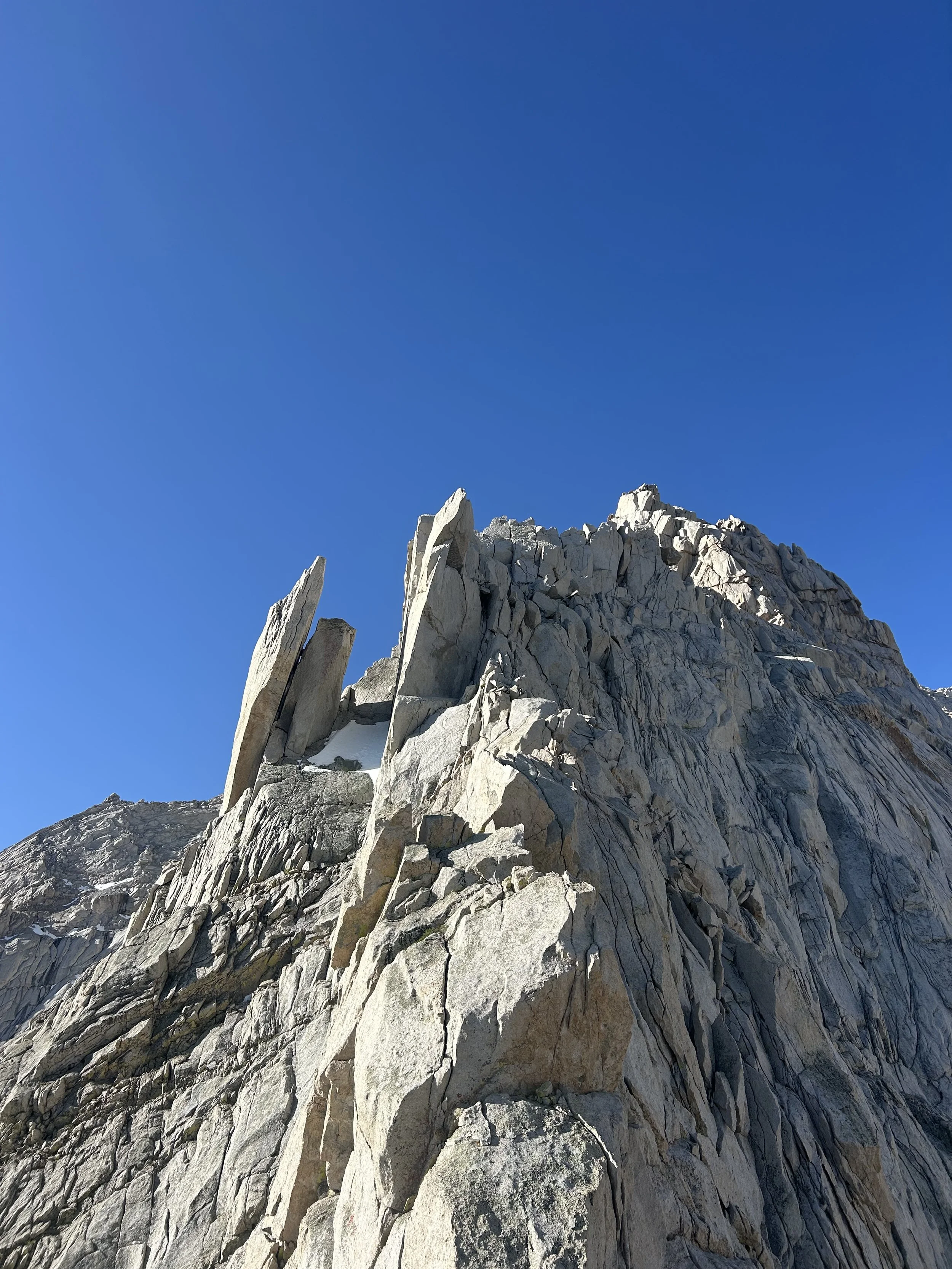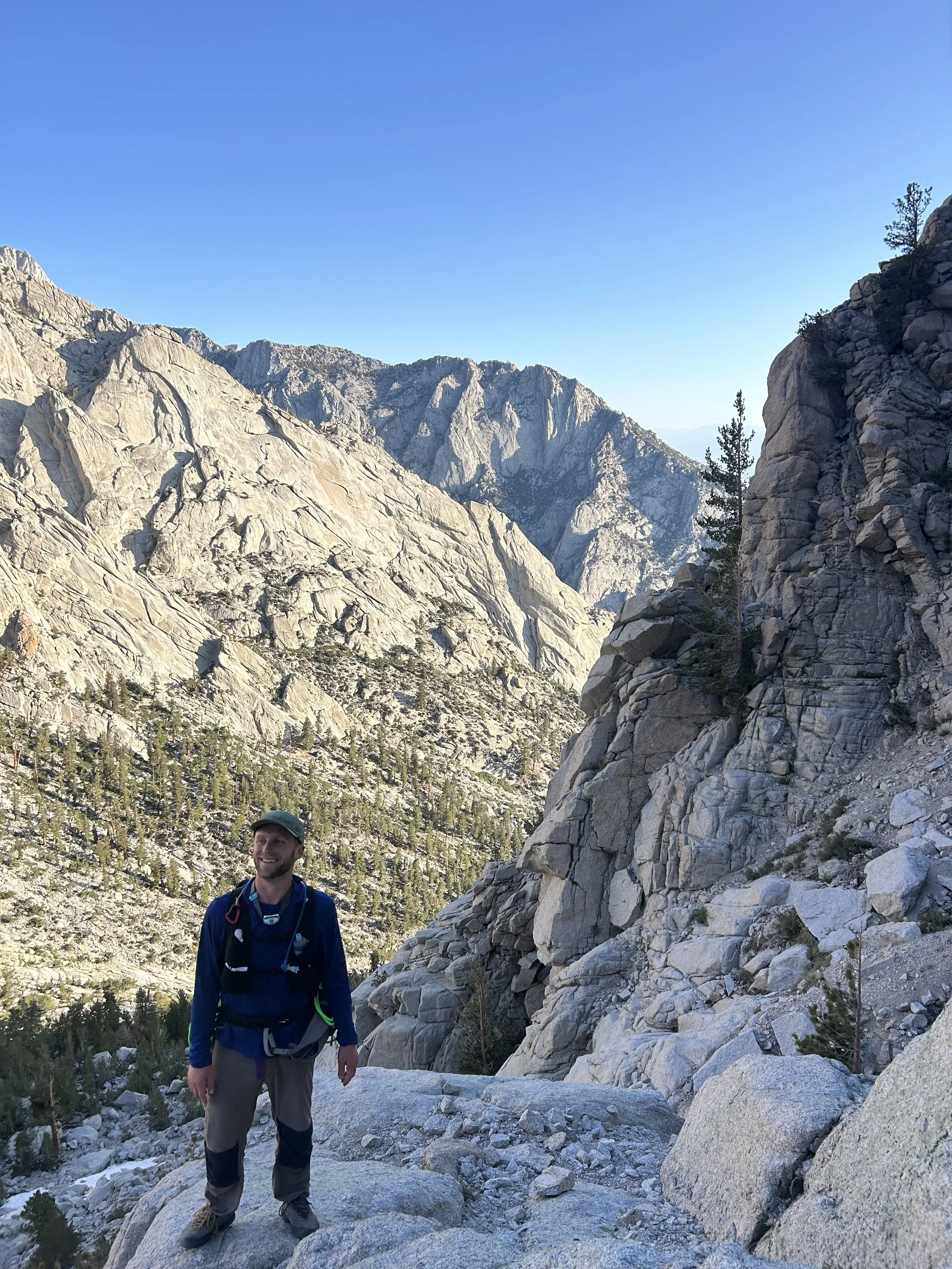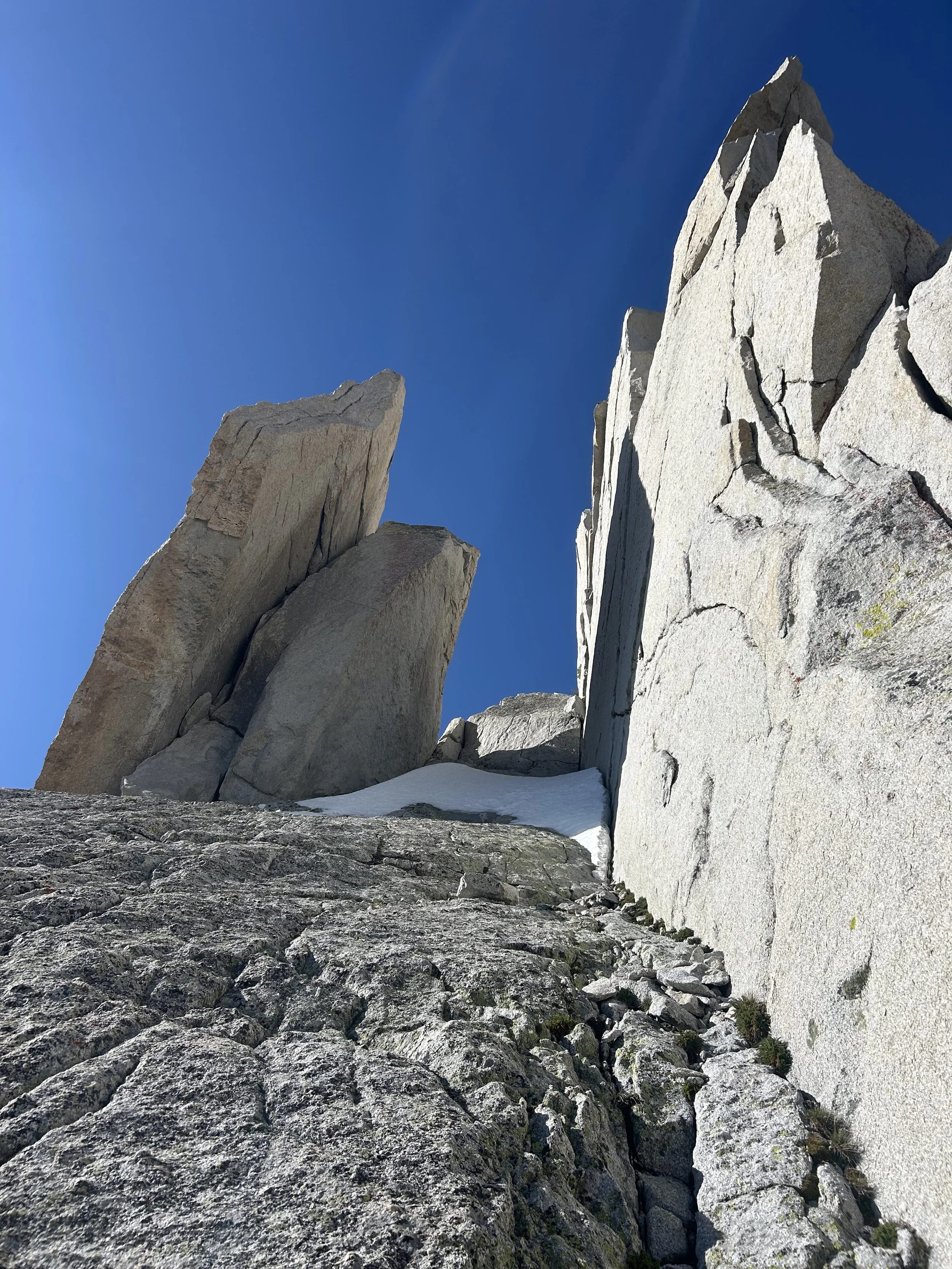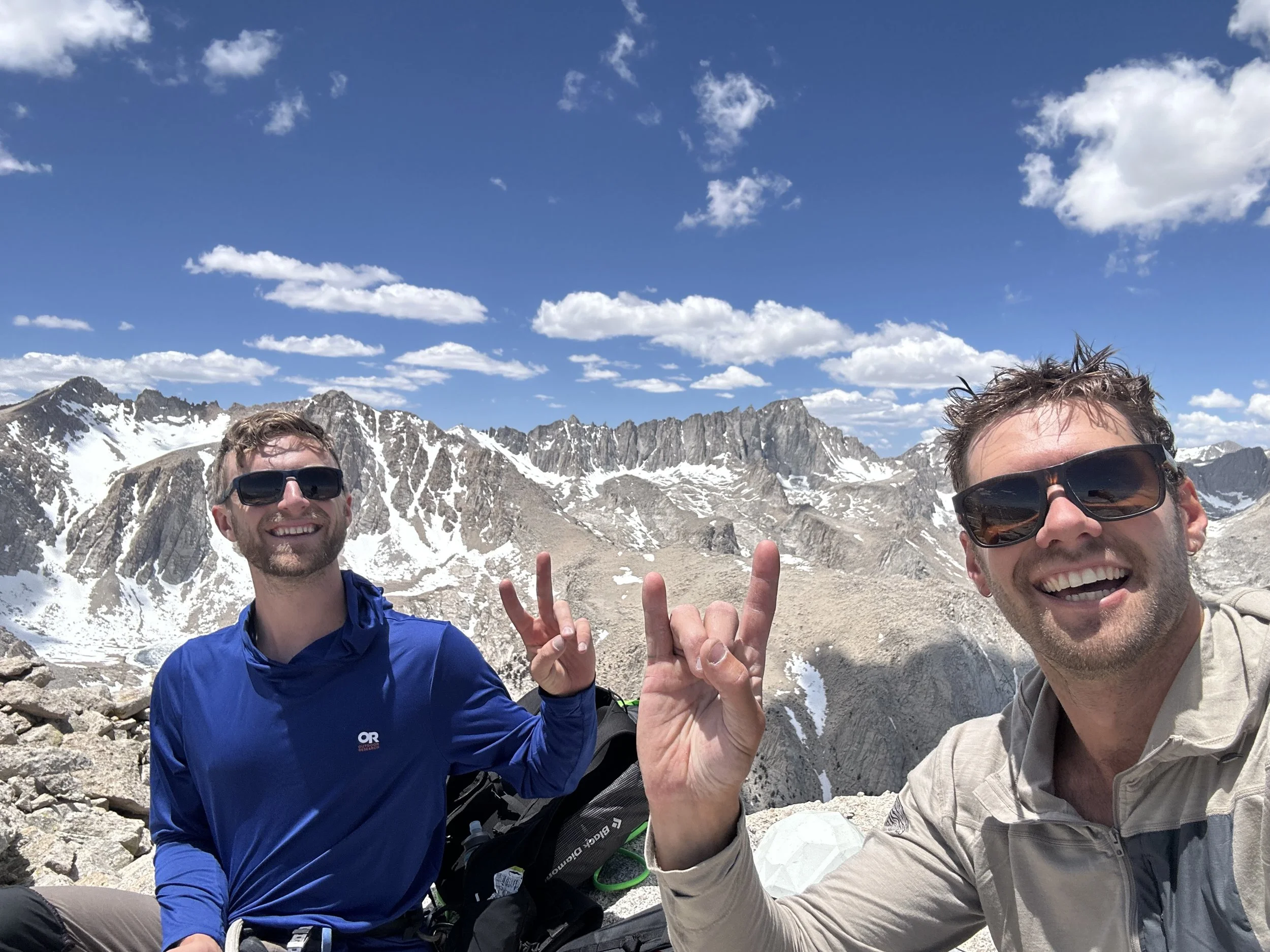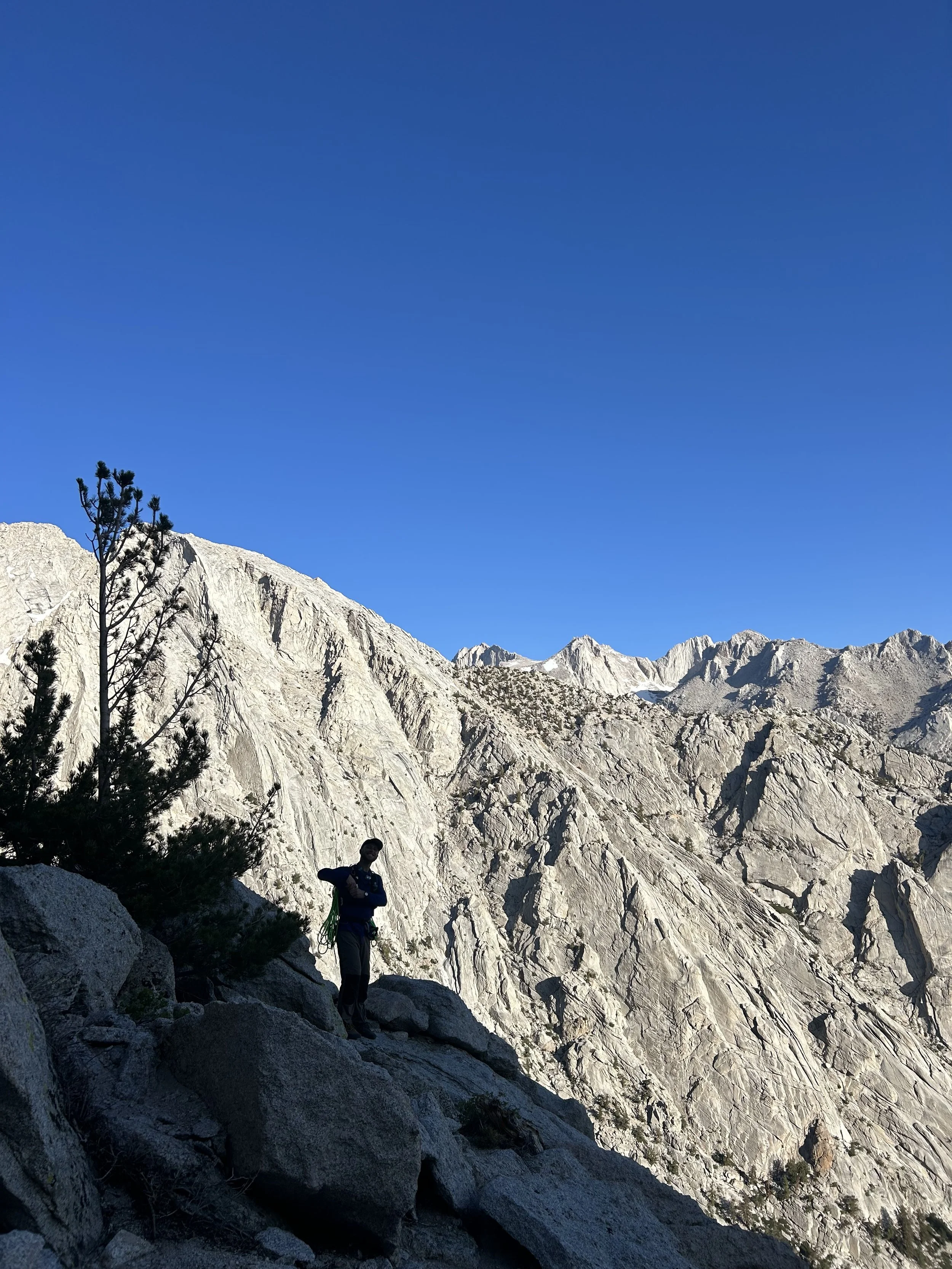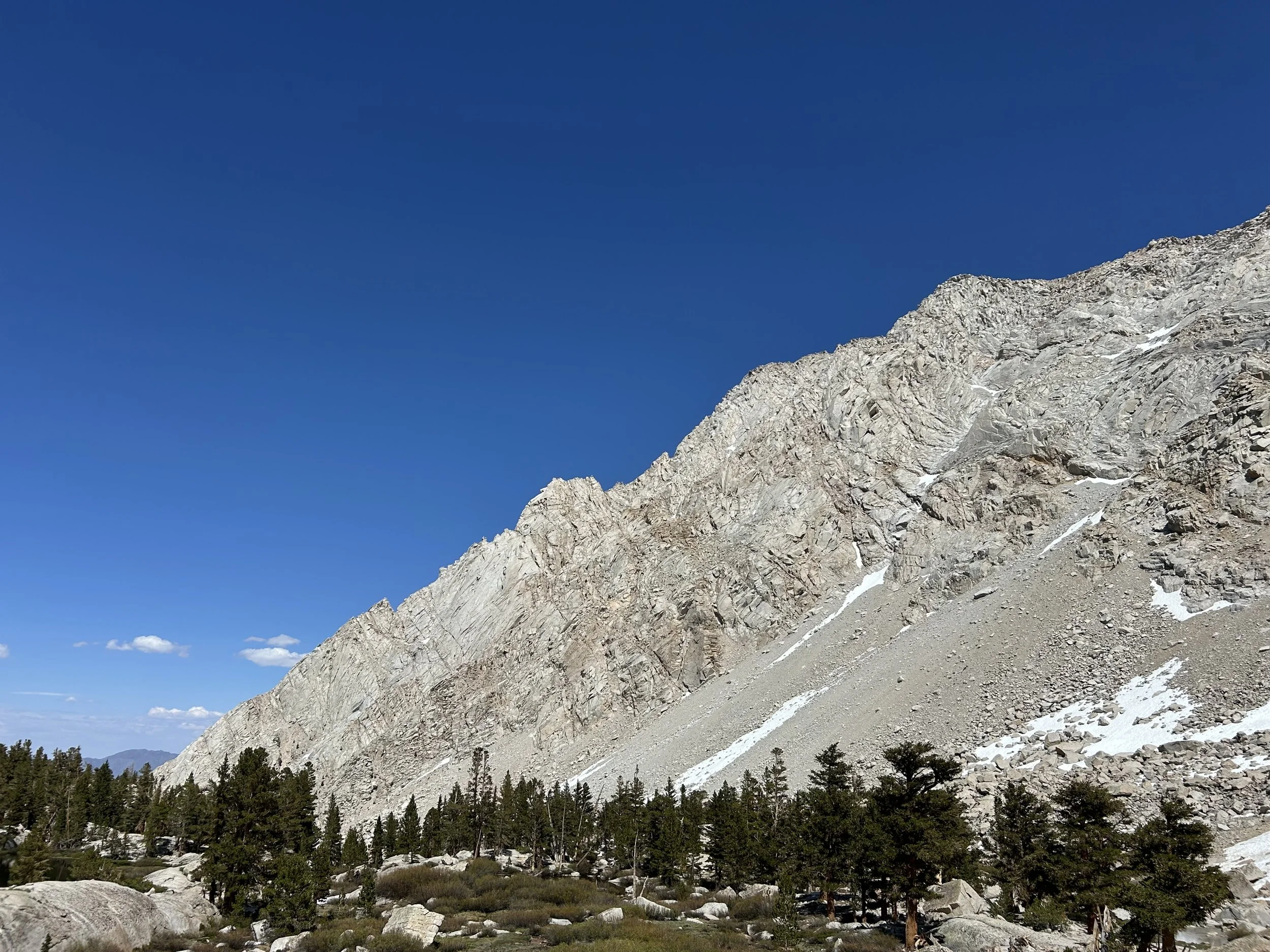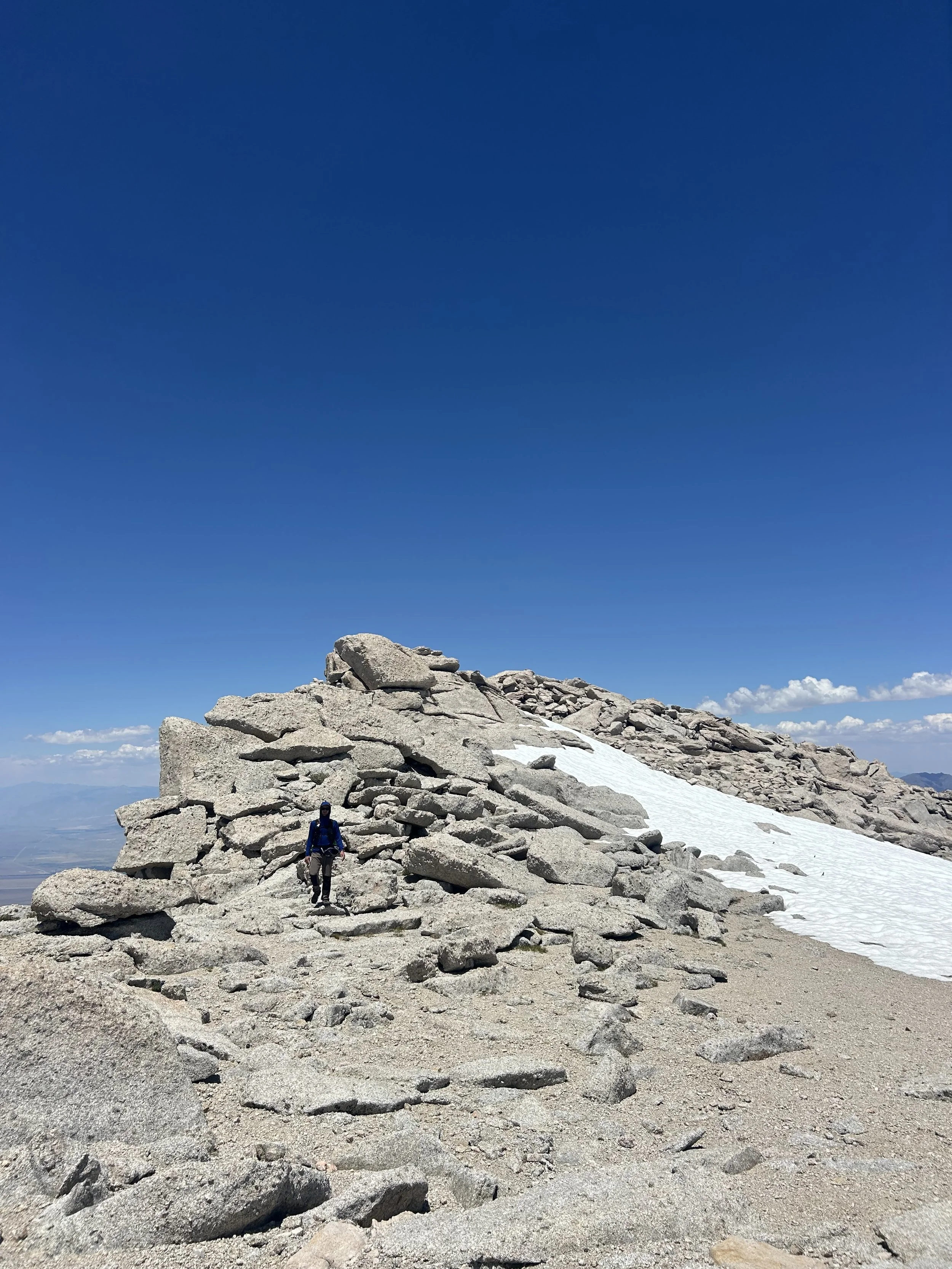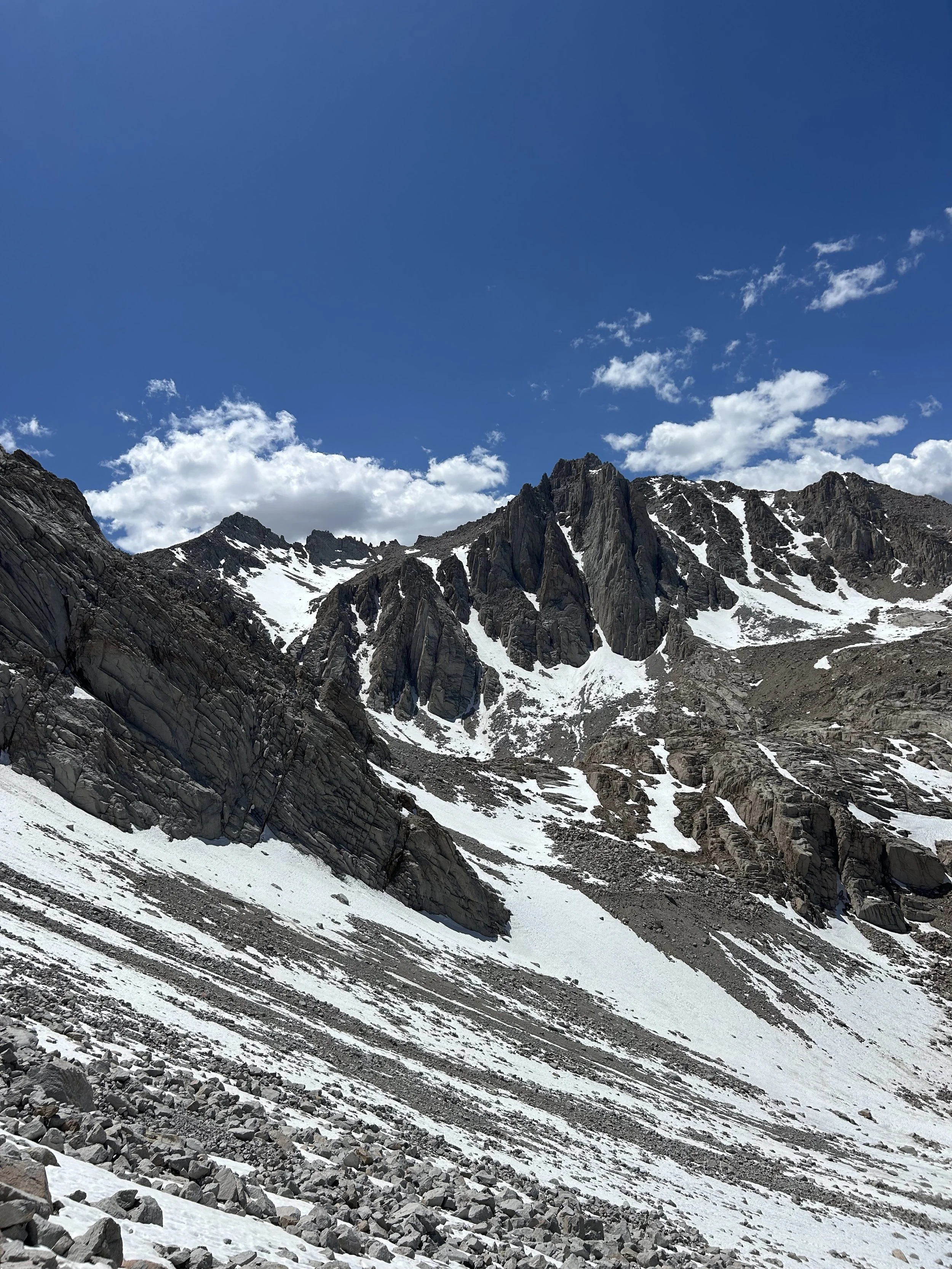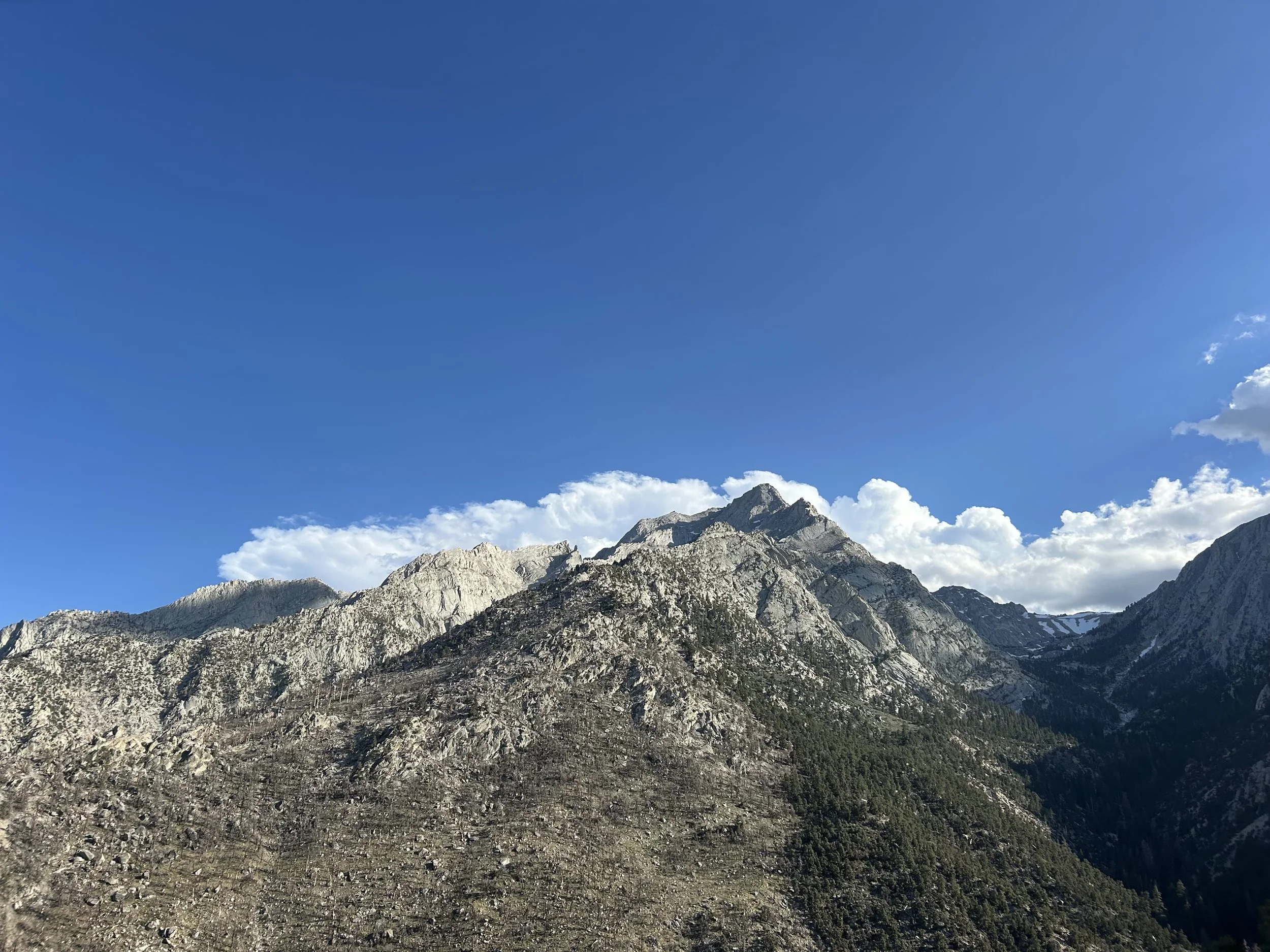Lone Pine Peak
Alpine Climbing Lone Pine Peak – A Full-Value Day in the High Sierra
9 June 2025. John Muir Wilderness, Inyo National Forest
There’s something uniquely satisfying about starting a climb by headlamp, with the stars overhead and the promise of granite ridges ahead. Lone Pine Peak, rising prominently above the Owens Valley, had been on our radar for a while—a big, aesthetic objective that offers technical climbing, routefinding, and classic Sierra scenery. We opted for the northeast ridge, a long and engaging line known for sustained 3rd and 4th class movement with some low 5th class steps, all culminating in a summit just shy of 13,000 feet.
The Approach: Headlamps, Switchbacks, and Silence
Our day started early—3:00 AM early—with a groggy wakeup and a quiet drive to Whitney Portal. By 4:30 AM, we were on the trail, moving steadily under the beam of our headlamps along the Meysan Lakes Trail. It’s a well-maintained but relentless uphill path, and the early morning temps made for ideal hiking conditions.
At around 9,200 feet, just after first light, we left the trail and began heading cross-country toward the northeast ridge. The terrain quickly shifted from well-defined trail to loose talus and steep slabs. We gained the ridge proper by 7:00 AM, just as the rising sun lit up the granite walls around us.
On the Ridge: Moving in the Alpine
The ridge itself is classic alpine terrain—exposed 3rd and 4th class climbing, with frequent sections of low 5th class, maxing out around 5.7. Movement was varied and dynamic: we soloed the easier stretches, broke out the rope to short-pitch steeper steps, and simul-climbed the longer but moderate sections to keep our momentum.
The rock was largely high-quality Sierra granite, but we still stayed mindful of loose blocks, especially on ledges. At one point, a steep headwall forced us to rig a quick 20-meter rappel to keep the route moving safely. Routefinding was a constant companion—never too difficult, but always requiring attention to detail. This isn’t a place you want to zone out.
The Summit: High Views and Thin Air
We reached the summit at 11:30 AM, standing at 12,944 feet, with unobstructed views of Mt. Whitney, the Whitney Crest, and the broad sweep of the Owens Valley. We lingered on the summit for a while, enjoying a well-earned snack break, hydrating, and just soaking in the altitude and the view.
The Descent: Downhill and Dive In
We began our descent around 12:30 PM, heading down the broad, sandy south slopes toward the Meysan Lakes basin. The descent was straightforward but long, with plenty of loose talus and down-sloping granite to keep things interesting. By 1:30 PM, we reached one of the glacial tarns in the basin, where we couldn’t resist a quick swim in the icy meltwater. It was the kind of refresh you can only find in the alpine.
With fresh water in our bottles and a spring in our step, we made quick time back to the Meysan Lakes Trail and dropped down the final miles. We hit the trailhead by 4:00 PM, making a beeline for burgers and beer at the Portal Store—a tradition that never disappoints.
Final Thoughts
Lone Pine Peak via the northeast ridge is a full-value day: long, technical, and incredibly rewarding. It’s not a beginner-friendly route, but for those with alpine experience and a taste for adventure, it delivers a proper Sierra classic. We walked away tired, happy, and already scheming for the next one.
Thanks for reading! If you are interested in climbing Lone Pine Peak or anything similar, please reach out!
See you in the mountains,
Larry
